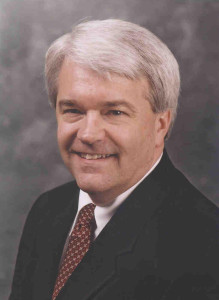Democratic presidential candidates Bernie Sanders and Hillary Clinton have locked horns in recent exchanges over who is the more “progressive” candidate and who deserves to be labeled as a “liberal,” a term with an increasingly negative connotation in American politics.
Now, recent national polls from political researchers at Washington University in St. Louis are shedding light on how American voters react to candidates who bill themselves as liberals or progressives — findings that may explain the strategies Sanders, Clinton and other politicians are using as they play to voter demographics in states across the nation.
Summarized in two reports issued this month by the university’s Weidenbaum Center on the Economy, Government, and Public Policy, The American Panel Survey (TAPS) polls reveal surprising racial, gender and educational differences in how liberal, moderate and conservative voters respond to political issues at the heart of the liberal v. progressive divide.
“A majority of Republicans and a majority of conservatives give liberals a negative score on spending, taxes and regulation, but less than a third of them give progressives a negative score,” said Weidenbaum Center Director Steven S. Smith, the Kate M. Gregg Distinguished Professor of Social Sciences in Arts & Sciences. “Plainly, for independents and Republicans, and for moderates and conservatives, the progressive label generates negative responses far less frequently than the liberal label.”

In one survey, respondents were asked to rate liberals and progressives for their honesty, patriotism, morality, support for wasteful spending, support for unnecessary regulations and support for high taxes. Another survey explored how the use of liberal or progressive labels differed among various groups of Democrats, depending on age, race and liberal-conservative leanings.
Among the findings:
- Independents and Republicans, moderates and conservatives, are less likely to view progressives in negative terms than to view liberals in negative terms. For a Democratic candidate for high office, the progressive label looks more appealing than the liberal label.
- Survey results show a clear divide along racial lines, with white panelists offering more negative evaluations of liberals relative to progressives than non-white panelists. Non-white Democrats feel much less attached to the progressive label than their white co-partisans and more willing to accept the liberal label.
- Better-educated, white Democrats are more likely to use liberal and progressive labels. The progressive label is used more frequently by white Democrats (58 percent) than by non-white Democrats (42 percent).
- Independents and Republicans, and moderates and conservatives, distinguish liberals and progressives more sharply than do Democrats and liberals.
- Among voters who describe themselves as independents, the liberal v. progressive issue has a substantial influence on how they rate a candidate. Independents who are more sophisticated and politically informed are more likely to rate progressives slightly better than liberals. Progressive candidates also do better with more sophisticated voters who identify themselves as being more conservative.
- A voter’s level of political sophistication and knowledge has a substantial influence on how he or she views liberals and progressives. Conservatives who are less familiar with the political process are more likely to rate liberals more negatively than progressives; while liberals with a similar political sophistication tend not to see much difference between liberals and progressives. In contrast, politically savvy people, whether liberal or conservative, are likely to rate liberals and progressives about the same.
TAPS is a monthly online panel survey of about 2,000 people. Panelists were recruited as a national probability sample with an address-based sampling frame.
The survey is conducted by GfK Knowledge Networks for the Weidenbaum Center. Individuals without Internet access were provided a laptop and Internet service at the expense of the Weidenbaum Center. In a typical month, about 1,700 of the panelists complete the online survey.
More information is available at taps.wustl.edu.
